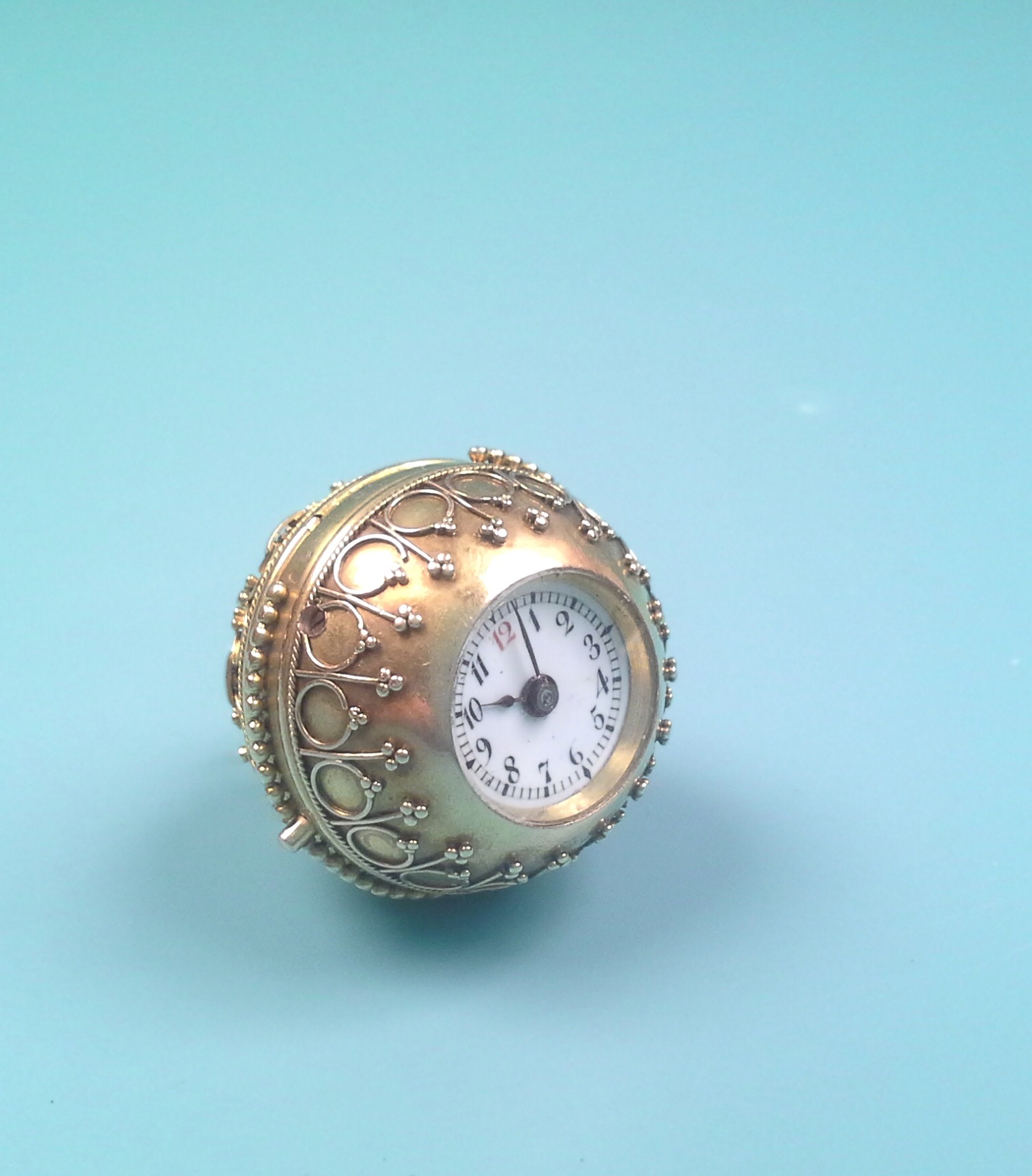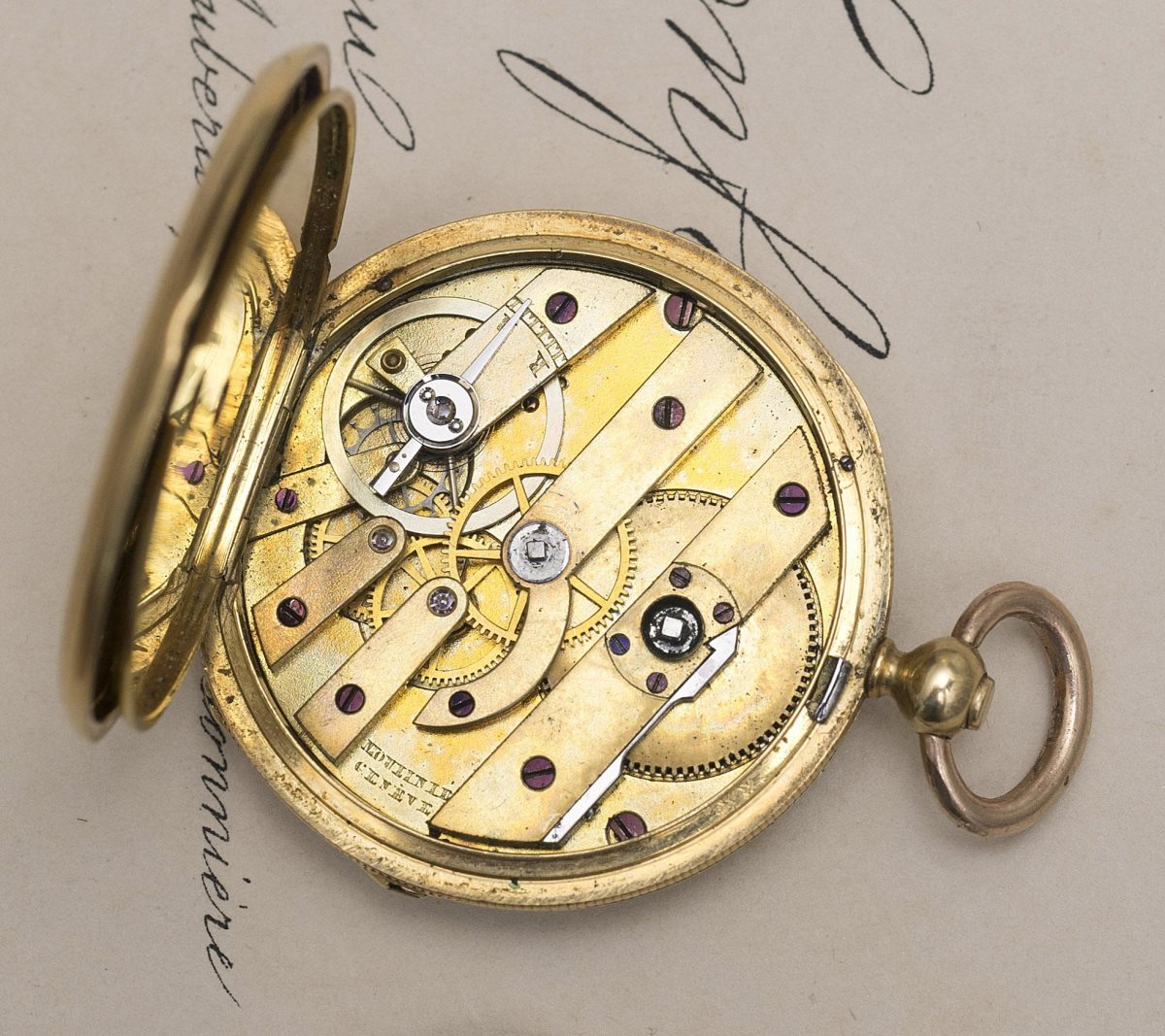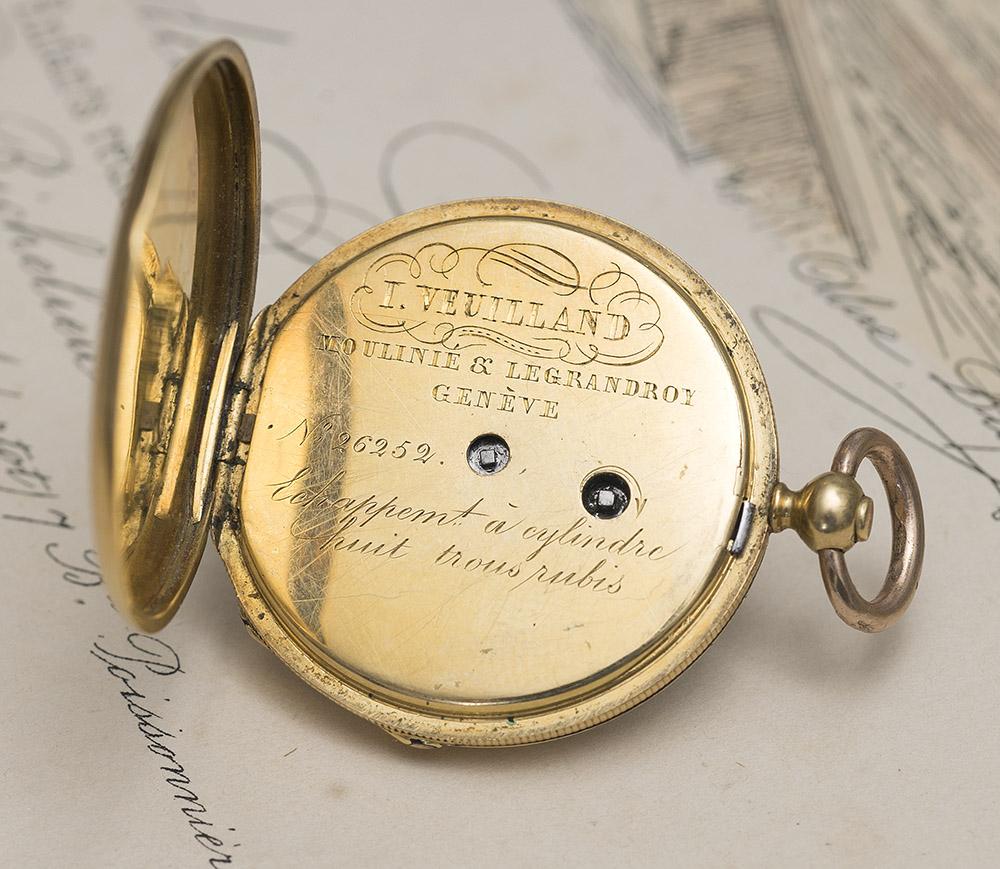While the classical era saw the miniaturization and perfecting of watchmaking mechanisms, as well as the appearance of the watch, the nineteenth century was marked by a process of industrialization of the sector: the industries gradually replace small artisans. This is the period when the mechanization of labor makes large-scale production possible, and increasingly democratizes the acquisition and use of timepieces. Discover the history of watchmaking during this period.
Transition to the industrialization of watchmaking
Nineteenth century watchmaking discovered the principles of mechanization of work: machine tools, mass produced from Europe to the United States, were not intended to replace human activity strictly speaking, but rather to limit the risks associated with inaccuracy, for operations that do not suffer any kind of error. In this perspective of mechanization and industrialization of watchmaking, the firm Vacheron & Constantin created, in 1839, a complete series of machine tools dedicated to the manufacture of watches. This is the era of the appearance of large watchmaking establishments, such as that of Jean-François Bautte which brings together, as early as 1830, some 120 craftsmen and 180 workers, in all the professions of watchmaking.
The timepiece is democratized, but the industrialization of watchmaking is not the only cause: the inventiveness of the craftsmen pushes them to imagine models that are both simpler and more attractive, which greatly popularize the use of watchmaking. chronographs. The design, from 1810, of the wristwatch by Abraham-Louis Breguet (offered to Caroline Murat, the Queen of Naples), or that, in 1842, of the winding watch by Adrien Philippe, go in the direction of a universalization of the use of watches.
It only remains to lower the cost of manufacturing to, consequently, reduce the purchase price and allow more and more people to own it: this is what managed to do Georges-Frédéric Roskopf who, in 1867, produced a watch called “workers” (also called “the Proletarian”); made in La Chaux-de-Fonds, made up of 57 pieces instead of the 200 traditionally required, it is sold at an exceptionally low price of 20 francs. Nineteenth-century watchmaking, by its means, is also experiencing a form of democratization.

Competition from across the Atlantic
By the mid-nineteenth century, the Swiss watch exceeds its English sister: Swiss production encompasses more than half of the world industry (70% around 1870). However, this new status is quickly threatened by the rise of the industrialization of watchmaking in the American way. In the context of a veritable industrial revolution in watchmaking, the mechanization associated with an effective principle of division of labor (Taylorism) tends to call into question the domination of the Swiss establishment.
Americans know how to do it, and prove it. The 1876 World’s Fair, held in Philadelphia, Pennsylvania, is marked by the insolent dominance of the world’s first watchmaking manufacture, the Waltham Watch Company, founded in 1850 by Aaron Lufkin Dennison. automatic machine to manufacture screws, as well as the first assembly line dedicated to clockwork mechanisms. At the end of the chain, watches taken at random are studied by a duly constituted jury, which gives the firm of Dennison the gold medal of the first world chronometric competition.
Swiss watchmakers, challenged by articles in specialized newspapers, are asked to react; they then realize the power of American industry in this area, and in return, Switzerland is accelerating its own mechanization process. The industrialization of watchmaking knows no limits on both continents.
Universal Time
The nineteenth century is also that of the imposition of a Universal Time. In question: the revolution of the railway. With the technical evolution of trains resulting in greater speed of travel over long distances, the profusion of local timetables (different from village to village) becomes a real headache not only for train drivers, but also for trainers. travelers, who can never trust an exact time. As a result, England imposed, in 1847, the single hour on the whole territory, based on that of London.
In the United States, the problem is even more significant, given the great distance between East and West. The transcontinental railway, completed in the aftermath of the Civil War, extends over some 4,000 kilometers; how to trust Washington’s time when traveling to San Francisco? In 1876, it was decided to segment US territory into 5 time zones. These precedents push the time revolution of 1883: during the Congress of Rome, the world powers decide to divide the terrestrial circumference into 24 equal spindles, separated by a longitude of 15 degrees (one hour); the starting point is the meridian of Greenwich, England.
The imposition of Universal Time responds, in a way, to the industrial revolution in watchmaking: it is because we manufacture and sell more and more watches, and timepieces travel everywhere, that it has become necessary to trust a single fixed hour.
Major watchmakers of the 19th century
Among the names of watchmaking that marked the nineteenth century, include:
- Louis-Benjamin Audemars (1782-1833): emblematic figure of luxury watchmaking, founder of the Swiss company Louis Audemars & Cie.
- Jean-François Bautte (1772-1837): Founder, in Switzerland, of the Moulinié & Bautte factory (in 1793), which later became Moulinié, Bautte & Cie.
- Airy George Bidell (1801-1892): English, director of the Observatory of Greenwich, he conducted numerous studies on the different parts of watches (exhausts, gear wheels, influence of magnetism on chronometers, “Airy formula” disturbances that affect the period of an oscillator, etc.).
- Friedrich-Wilhelm Bessel (1784-1846): German astronomer and mathematician, he conceived the pendulum to involute of circle.
- Abraham-Louis Breguet (1747-1823): Switzerland adopted by Paris, he improved the so-called “perpetual” watch (whose winding is done according to the movements of the one who wears it) and developed many inventions of his own (the spring-stamp, various exhausts, the bumper, the Breguet spiral, the Tourbillon, the wristwatch, etc.). Although having lived a large part of his life in the eighteenth century, some of his inventions date from the early nineteenth, hence his presence in this list.
- Georges-Auguste Léschot (1800-1884): Switzerland, inventor of the first machines used to manufacture the different parts of a watch, with the intention of producing interchangeable parts.
- Louis Monet (1768-1853): inventor (French) of the chronograph.
- Adrien Philippe (1815-1894): this French watchmaker joined Norbert Patek to found the
- Patek Philippe house in Geneva. Among other things, he is the inventor of a winding watch and set the time to the pendant.
- Georges-Frédéric Roskopf (1813-1889): This German watchmaker invented the watch that bears his name, quality and accessible to ordinary mortals.


 Français
Français
